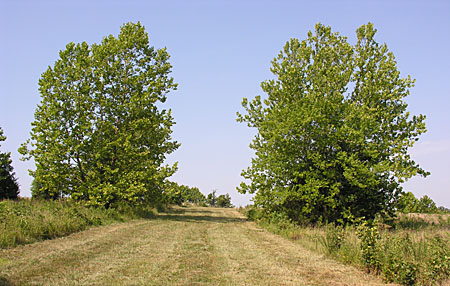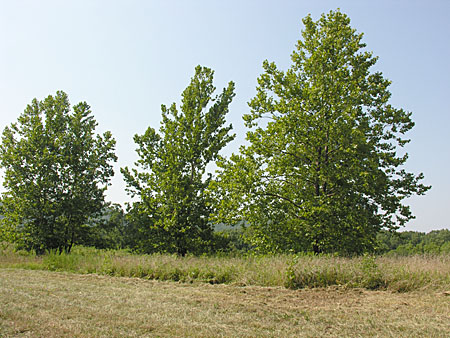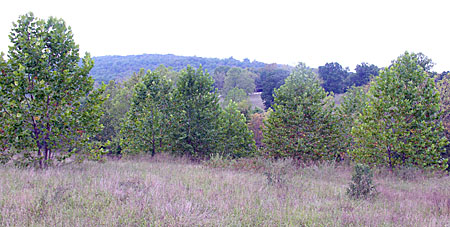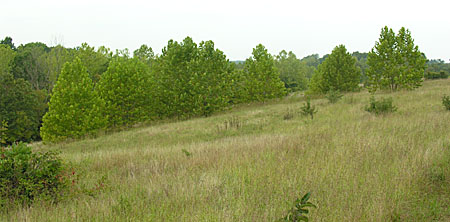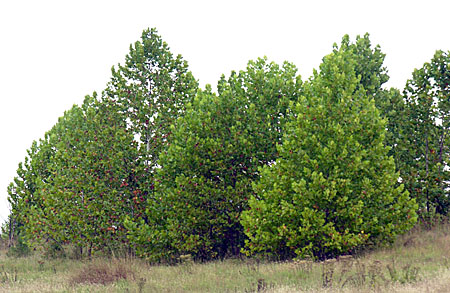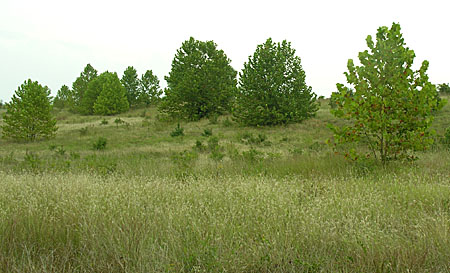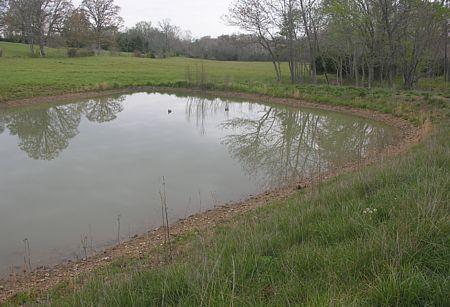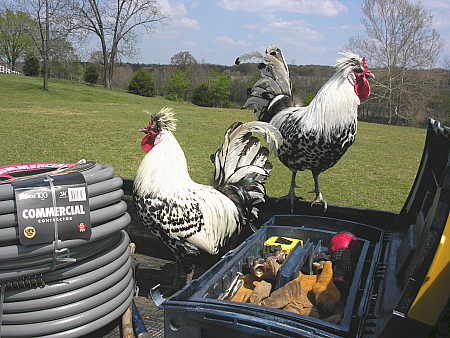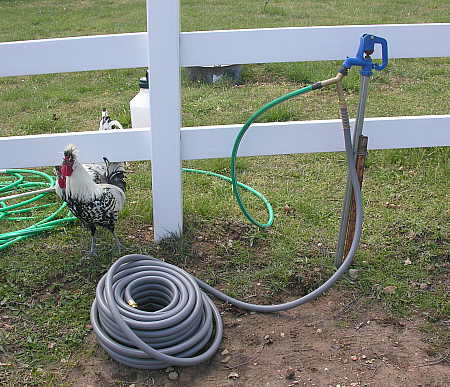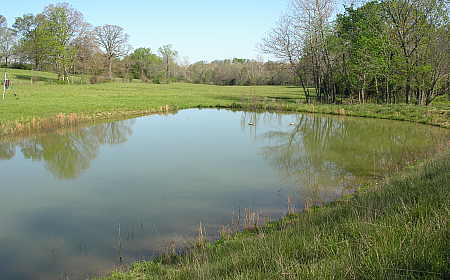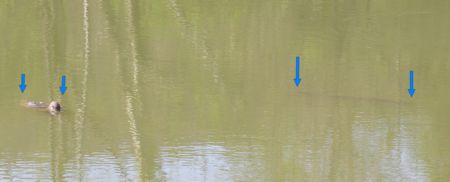American Sycamore
The trees that you can see on either side of this trail are semi-mature American Sycamores. The American Sycamore is a massive hardwood tree native to portions of the eastern United States.  The sycamore has the largest trunk diameter of the American eastern hardwoods, and reaches a height of 100 feet during a lifespan that may approach 500-600 years.
The American Sycamore has a reputation among some as being an undesirable tree, primarily due to the characteristics of the tree which make it somewhat unsuitable to the urban environment.  The massive root system tends to uplift sidewalks and roadbeds, and many decry the constant mess of twigs and leaves that surround the sycamore. On the plus side of the equation, the sycamore is draught tolerant, flood tolerant, and can grow in a variety of soil conditions, including both alkaline and acidic, as well as compacted soils. Additionally, the American Sycamore is a very rapidly growing species, which will be evident as you examine the photographs in this post.
There is a section of land on our property we call “the ridge.”  Formerly used to graze cattle, this area contains about 40 acres of what used to be exclusively forage grasses. The ridge falls away to creek beds on either side, and because we do not raise cattle, the ridge has been a prime candidate for reforestation of some sort.
The district forester with the Arkansas Department of Forestry conducted a field survey for us in 2001, and prepared a management plan which included the suggestion that we plant this ridge area with Loblolly Pine trees. Naturally, I had other ideas.  It isn’t that I have anything against Loblolly Pines, it’s just that I have an aversion to shovels, watering cans, and building protective cages to protect the young trees from the marauding deer which inhabit the area. But the ridge needed trees, so what’s a man to do?
The first year that we resided on this property, I noticed that the pastures of this ridge were inundated with young plants, which I was inclined to shred with the bush hog to promote lush grasslands. On further examination, and with a little research, I determined that these small plants were tiny sycamores that were popping up in abundance on the ridge. As long as the ridge needed reforestation, and being as these sycamore trees seemed intent on making the ridge their home, I decided to oblige them by sparing their lives and allowing them the opportunity to grow, unmolested by my tractor.
In the short time (6 years) that the sycamores have been allowed to grow on the ridge, they have thrived. Each year I allow additional sycamore saplings to take a foothold on the ridge, and the trees that have been growing since 2001 are now in the 15-20 foot range, perhaps taller.  In the photographs above, you can see sycamore trees of various ages, and how they are gradually taking over the ridge that had previously contained nothing but grasses. I have not taken the time to try and count the American Sycamores that now make the ridge their home, but I would guesstimate the number to be around 150-200 trees.
This is the third installment of Landscaping, My Way. The first installment covered the Dwarf Sumac that I am encouraging to grow in selected clearings. The second installment dealt with the Silver Poplar grove that is spreading within a portion of our woods. In the first installment, I suggested that you might see a pattern develop regarding what I call “Landscaping, My Way.” Do you see the pattern yet?


